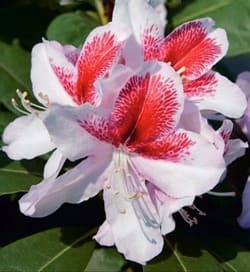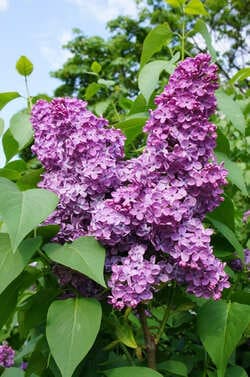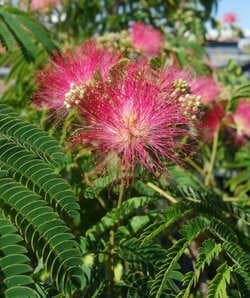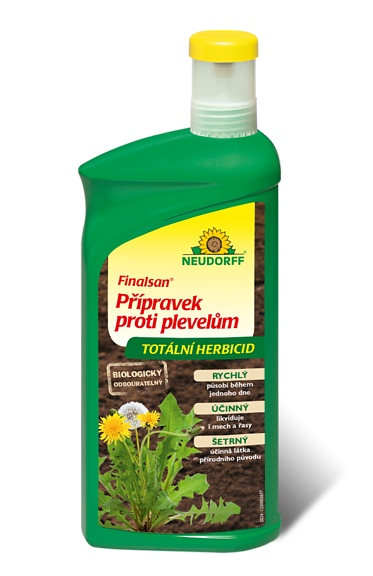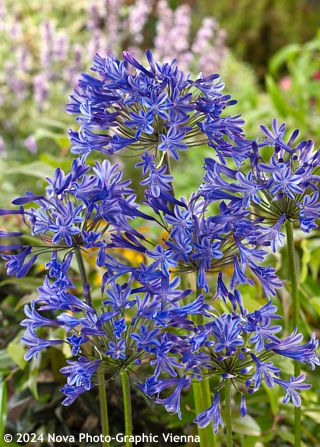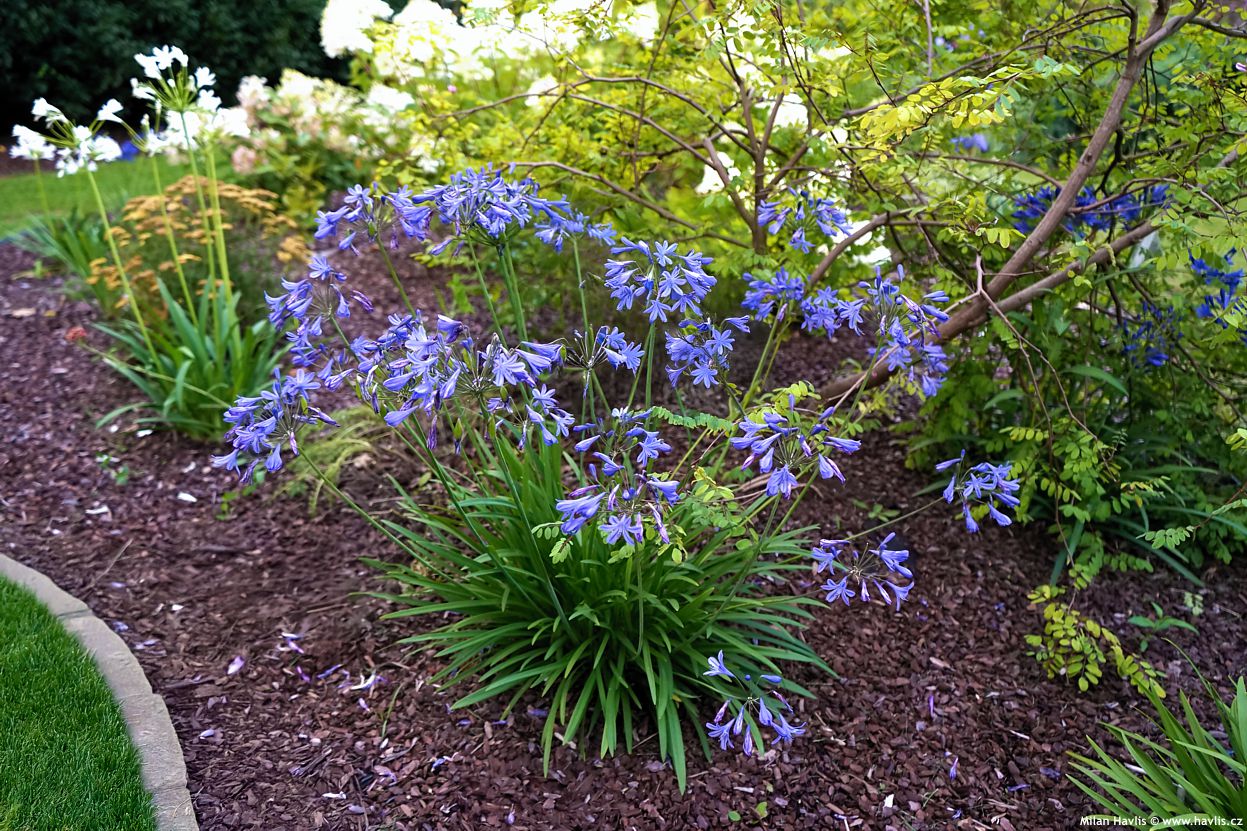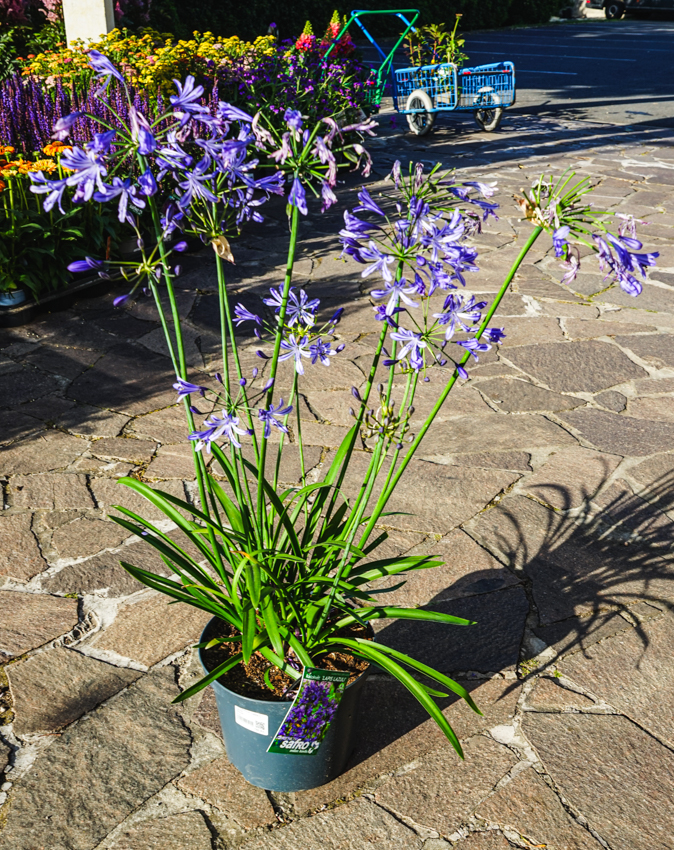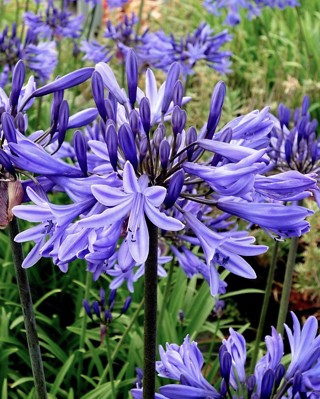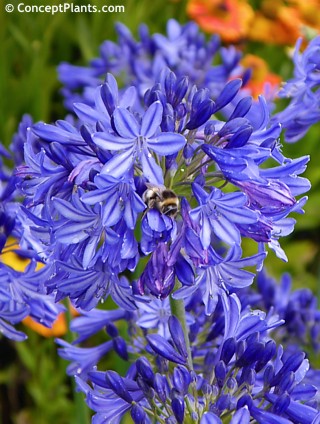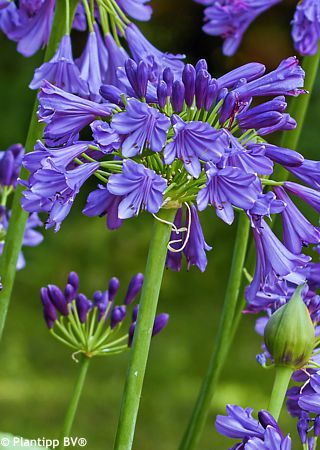Agapanthus 'LAPIS LAZULI' African blue lily
Agapanthus
The genus Agapanthus, commonly known as African blue lily, comprises eight recognized species of perennial herbs native to southern Africa, particularly the regions of the Cape, Lesotho and KwaZulu-Natal. The first plants were brought to Europe as early as 1679 from the Cape Town area to botanical gardens in the Netherlands – a logical development given the Dutch colonial dominance in what is now South Africa. The genus was first described botanically by Jan Commelin in 1707, but it was French botanist Charles Louis L’Héritier de Brutelle who formally classified it in 1788, establishing Agapanthus as a distinct genus within the Amaryllidaceae family. These plants are characterised by clump-forming growth, strap-like leaves and striking inflorescences composed of tubular flowers, most commonly in shades of blue and white. In the wild, they grow on sunny slopes, grassy plains and rocky outcrops, exposed to significant temperature fluctuations. Although early botanists and plant collectors, driven by a desire for exotic prestige, brought specimens from the southern hemisphere to impress European courts and university gardens much earlier, the genus only began appearing in European botanical collections from the 19th century onwards, as its hardiness was gradually assessed.
The most cold-hardy species proved to be Agapanthus campanulatus, native to higher elevations in South Africa’s interior. Its ability to withstand cold winters inspired British botanist Lewis Palmer, then vice-president of the Royal Horticultural Society (RHS), based at Headbourne Worthy Grange in Hampshire, to develop the famous Headbourne hybrid line. In the mid-20th century, Palmer began crossing A. campanulatus with other deciduous species such as A. inapertus, aiming to produce perennials that could survive outdoors in the British climate without greenhouse protection. These hybrids laid the foundation for modern breeding, which continues today in the USA, Europe and New Zealand. Ironically, many contemporary breeders are unaware that, under the right conditions, these hybrids can thrive even in Central Europe, enduring frosts down to -20 °C and sometimes even lower.
Agapanthus Lapis Lazuli is not only a beautifully blue cultivar of this South African gem, but also one of the hardiest agapanthus varieties suited to Central European climates. From early summer, it produces 40–60 cm tall stems topped with clusters of buds arranged in terminal umbels, reminiscent of ornamental alliums. Each flower is a slender bell of fresh violet-blue, accented with several darker stripes. The flowers open gradually from the outer edges towards the centre, allowing each stem to bloom for an extended period. Flowering typically spans July and into early August, and uniquely, this cultivar is capable of repeated blooming – producing a second flush of flowers in late summer. 'Lapis Lazuli' is a narrow-leaved favourite, with deciduous foliage resembling liriope: medium green, slender and modest in length.
'Lapis Lazuli' was bred in Taranaki, on the western side of New Zealand’s North Island, a region with a mild maritime climate – frost-free winters, ample rainfall and temperate summers. Its tolerance for moisture, unlike its drought-adapted African ancestors, combined with the genetic resilience of deciduous parent species and its low demand for intense sun and heat, led to the creation of one of the hardiest agapanthus cultivars we’ve ever grown. In the garden, it looks best when mulched with light grey gravel and alongside plants that share both its growing requirements and its summery spirit – sun-loving species with bold colours and midsummer blooms, such as compact verbenas, dark-leaved sedums, gaura, cheerful gaillardias and pastel-hued coneflowers.
Grow agapanthus in fertile soil with excellent drainage to prevent root rot over winter. From late spring to the end of summer, the plant benefits from regular feeding and occasional watering, although its fleshy roots allow it to tolerate short dry spells. In Mediterranean climates, it is a beloved summer feature in both containers and garden beds. In temperate regions, it excels in summer compositions near pools and terraces, where the season lingers longest. Good news: it is not favoured by slugs. For winter protection in zone 7, a layer of dry bark or leaves at the end of autumn is sufficient, but in colder areas with harsh winters, a thicker mulch and waterproof cover are recommended. At the end of winter, as soon as the risk of severe frost has passed, remove the cover and half the mulch, then wait for true spring (March/April) to uncover the rest, clear away old foliage and allow the plant to re-emerge. Tested hardiness is -23 °C (USDA zone 6) and it is believed to tolerate even lower temperatures.
Last update 31-12-2024; 26-10-2025
Goods are shipped all over Europe. For Russia and U.K. and for further details please read about SHIPPING OPTIONS HERE.
Are you interested in a serious discount for orders NOV-FEB? Check your options here.
THE PRICES INCLUDE VAT of 15%. For quick conversion you can use 1 CZK = approx. 0.04 EUR
- STANDARD QUALITY - Plants of this group are 1st class quality with number of branches and overall density adequate to their size and age, considering they were container grown.
- DE LUXE QUALITY - This label guarantees a luxurious quality of manually selected plants that, compared to their height and age, are exceptionally dense and beautiful.
- EXTRA - These plants are usually mature and bigger specimens with exceptional overall appearance.
- STANDARD (as described in the plant form) means a tree with a trunk of 190-210 cm and a crown at the top, unless specified differently. The commercial size for trees is their girth measured in the height of 1m from ground.
- HOBBY - These plants are of the same quality as our standard-quality plants but younger and therefore cheaper.
- SHRUB - a woody plant with branches growing bushy from the ground level.
- HALF-STANDARD or MINI-STANDARD - a small tree with shorter trunk, its size is usually specified.
- FEATHERED - These are trees with branches growing already from the base of the trunk and up along the stem.
- GRASSES and PERENNIALS - Sizes given usually read the diameter of the pot or the clump, as specified.












